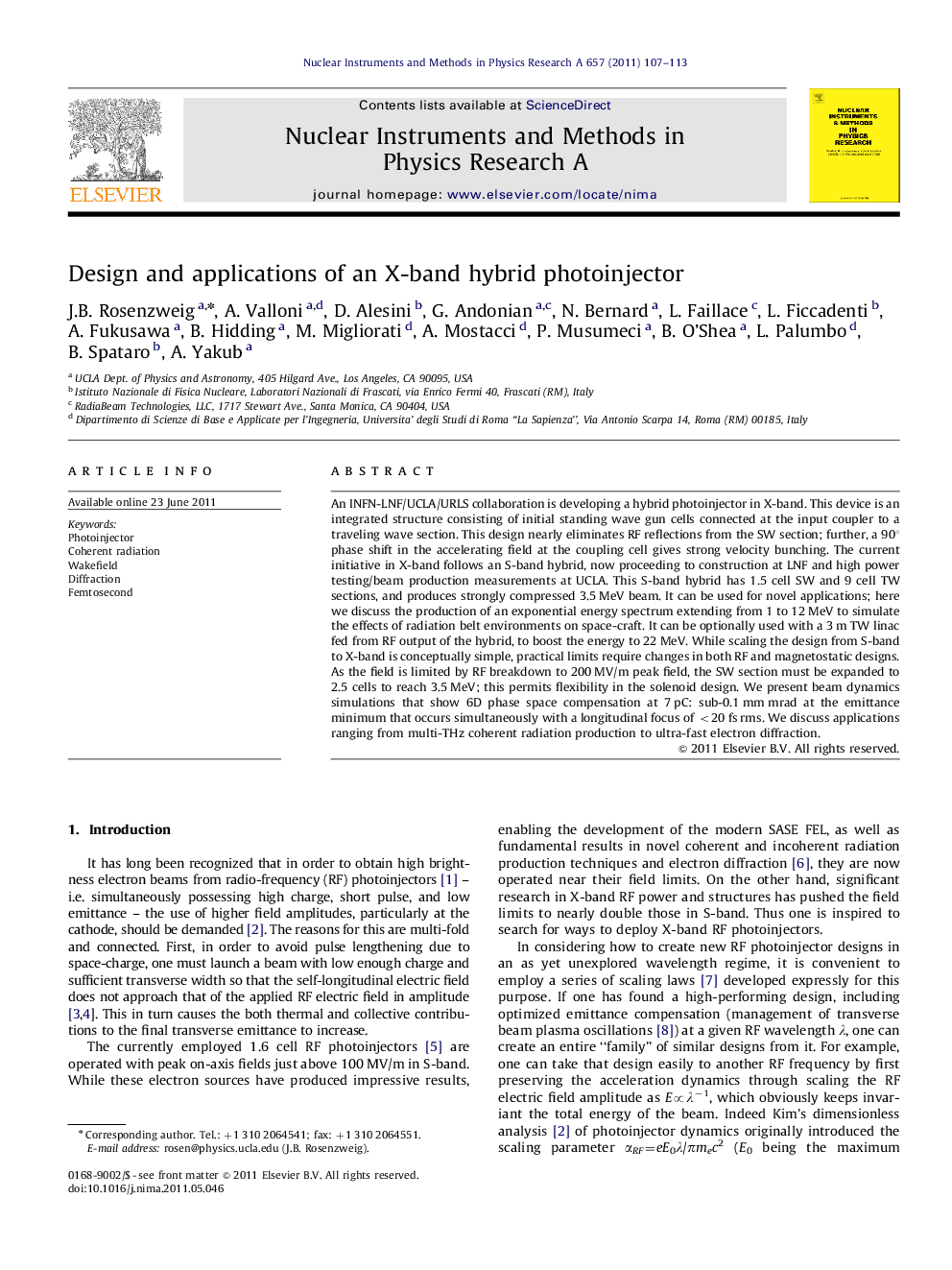| Article ID | Journal | Published Year | Pages | File Type |
|---|---|---|---|---|
| 1824538 | Nuclear Instruments and Methods in Physics Research Section A: Accelerators, Spectrometers, Detectors and Associated Equipment | 2011 | 7 Pages |
An INFN-LNF/UCLA/URLS collaboration is developing a hybrid photoinjector in X-band. This device is an integrated structure consisting of initial standing wave gun cells connected at the input coupler to a traveling wave section. This design nearly eliminates RF reflections from the SW section; further, a 90° phase shift in the accelerating field at the coupling cell gives strong velocity bunching. The current initiative in X-band follows an S-band hybrid, now proceeding to construction at LNF and high power testing/beam production measurements at UCLA. This S-band hybrid has 1.5 cell SW and 9 cell TW sections, and produces strongly compressed 3.5 MeV beam. It can be used for novel applications; here we discuss the production of an exponential energy spectrum extending from 1 to 12 MeV to simulate the effects of radiation belt environments on space-craft. It can be optionally used with a 3 m TW linac fed from RF output of the hybrid, to boost the energy to 22 MeV. While scaling the design from S-band to X-band is conceptually simple, practical limits require changes in both RF and magnetostatic designs. As the field is limited by RF breakdown to 200 MV/m peak field, the SW section must be expanded to 2.5 cells to reach 3.5 MeV; this permits flexibility in the solenoid design. We present beam dynamics simulations that show 6D phase space compensation at 7 pC: sub-0.1 mm mrad at the emittance minimum that occurs simultaneously with a longitudinal focus of <20 fs rms. We discuss applications ranging from multi-THz coherent radiation production to ultra-fast electron diffraction.
